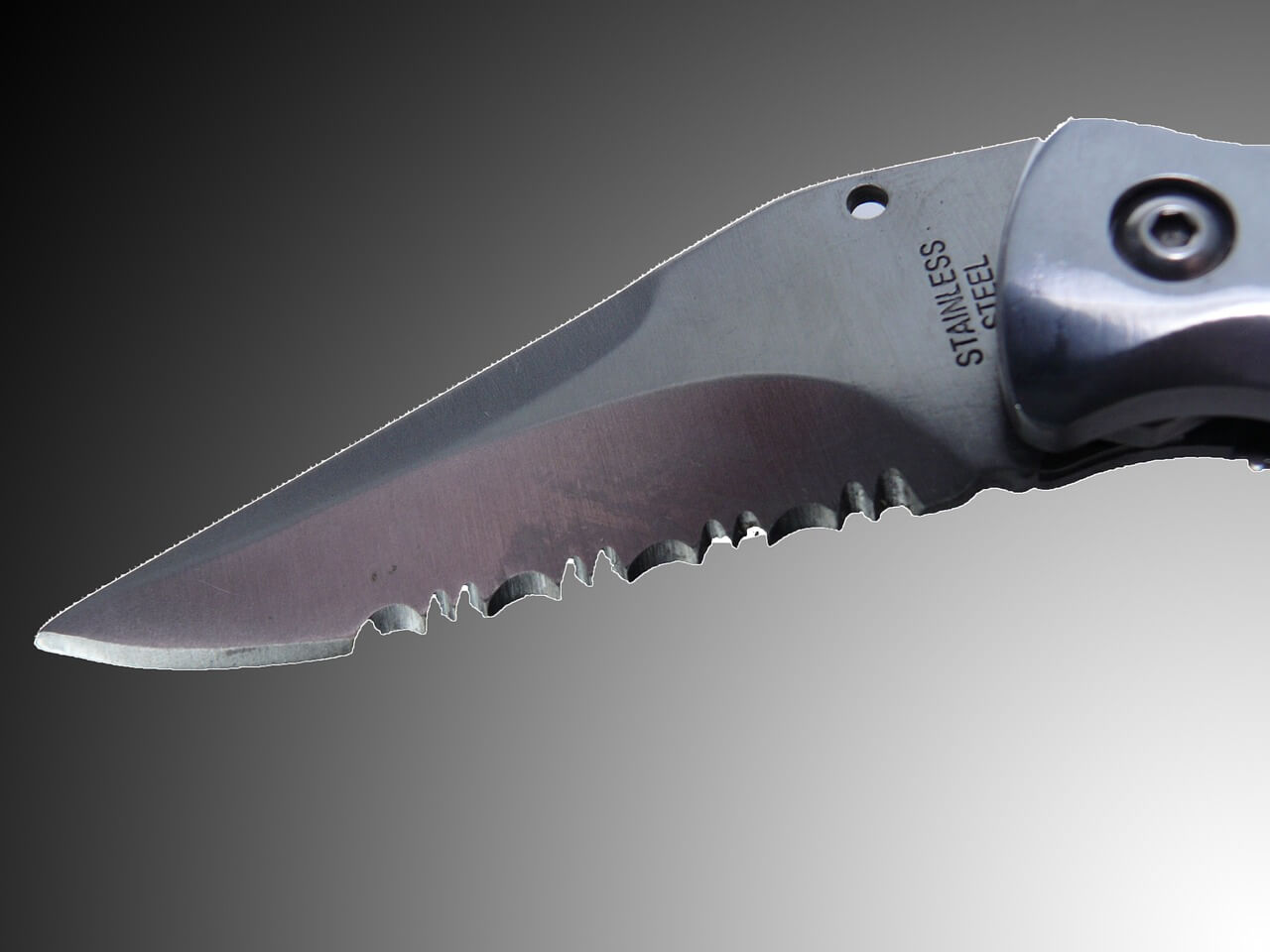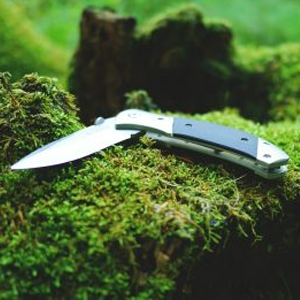The knife is one of man’s oldest and trustiest tools, and it has certainly been instrumental in our fight for survival in the harsh wilderness. It’s easy to forget just how important this tool is as we sit in our comfy homes eating a hot meal we’ve picked up in a Drive-through, but spend a day out in nature and you’ll quickly get a newfound appreciation for quality knives.
That being said, there’s a lot of dubious information out there about different kinds of knives, and I believe it is important to understand what you actually need, especially for something as serious as a survival situation.
Whether you are a soldier looking for a quality edged tool, or perhaps a hiker or mountain biker who needs a last resort tool if disaster should strike, there’s a few things you need to know before buying a survival knife.
Let’s start by defining what constitutes a survival situation and then explore the common characteristics of good survival knives.
Survival vs. Bushcraft vs. Camping
If you are just going to meet up with a few buddies and drive out into the forest with a couple of dozen cans of beer and some barbecue meat for a day of fun camping, then you can pretty much bring any knife you’d like, as long as it is sharp.

Of course, there are those who like to get closer to nature and prefer hiking out with one or two friends, and spending a couple of days in tents or makeshift shelters, but this is still what is referred to as a bushcrafting scenario, rather than true survival.
A survival situation is not a planned trip, it’s when something goes wrong and you are stuck out in the wilderness with limited resources and tools at your disposal. You may only have a few basic items, including one knife, so making sure that you have a knife that is up for the challenge becomes incredibly important.
Essential tasks that the knife will have to perform
The most essential things in a survival situation is to ensure that you have a heat source, water and food, which means that you will be using your knife for:
- Firewood processing – chopping down small trees, cutting them down into logs, batoning logs for firewood, making feathersticks or wood shavings to light a fire and so on.
- Woodcarving tasks – chopping up branches to use as building materials, making notches in sticks to create tent pegs, making animal traps and so on.
- Hunting – skinning and processing small and large game.
- Food preparation – cutting up vegetables and meat.
Some of these tasks can be quite demanding on the knife, so you need something that is hard enough to keep an edge, yet sturdy enough not to break. The knife also needs to be of the right size, with the right edge geometry and a comfortable handle that won’t allow it to slip out of your hand or cause blisters after a few minutes of batoning. With that in mind, let’s go over the main characteristics of a good survival knife.

Basic characteristics to look for in a good survival knife
The modern market is full of cheaply made and not incredibly durable knives, which is not something you’d want to bet your life on. There are several important boxes that a knife needs to tick if it is to be called a functional survival knife:
- Good blade steel
- The right hardness
- Sturdy construction
- The right size and shape
- Durable sheath
Now, let’s take a more in-depth look at each of these points.
Blade steels that are good for survival knives
There are tons of options out there, but there are a few tried-and-true blade steels that are commonly used in survival knives:
1095 – It’s a high carbon steel that is quite cheap, easy to sharpen and fairly tough, but it cannot achieve a very high hardness, doesn’t hold an edge for too long and can rust at the drop of a dime. It’s a decent budget option if you can’t afford a better steel, but it’s in no way the first choice for survival knives.
AUS 8 – A cheap mild stainless steel that can be relatively resilient and has a good corrosion resistance, however it loses its edge quickly and the tip of the knife can roll over during prying or stabbing tasks. Again, it’s OK if you can’t afford anything better, but it’s not that good.
A2 – A high carbon steel that comes at a moderate price and can have a high hardness, but is is best known for its incredible toughness that makes it quite durable, even if abused, but it does rust fairly easily. It is a decent option, but since it rusts easily, it’s not the best choice.
VG-10 – This is a somewhat expensive laminate stainless steel, which means that there is a high hardness steel, used to get good edge retention, sandwiched between layers of softer steel that provide additional toughness. It keeps a decent edge during hard use, but the main issue is that the tip is prone to breaking during more demanding task, as this is where the high-hardness steel is left exposed, making the tip somewhat brittle.
CPM 3V – An excellent steel that combines high toughness and great edge retention. It will not rust easily, and it is up for most tasks, although it is a somewhat more expensive option.
Elmax – Another super-steel with excellent edge retention, high hardness and corrosion resistance, and plenty of toughness. It is a bit more expensive than the first couple of steels on the list, but you can still find a relatively affordable Elmax knife if you look around.
CPM S30V – A modern powder steel that offers incredible corrosion resistance, making it perfect for humid climates and long rainy days, as well as high wear resistance, i.e. it can hold an incredibly sharp edge for ages. The main downsides is that it can be expensive and that it is hard to sharpen.

I’d highly recommend that you save up some money and go for one of the better, but pricier steels on the list, as a good knife will last you a lifetime, and you don’t want to pinch pennies when your safety and survival are on the line.
The right hardness
In general, you don’t want to go for anything less than 58 HRC on the Rockwell scale, and some steels can have their edge chip when hitting bone or other hard materials if they are 60 HRC and over, so the 58-60 HRC range is a good rule of thumb, particularly for longer knives.
Sturdy construction
For a survival knife to be robust and sturdy it needs to have several important features:
- Full tang construction – the tang is as long and as wide as the handle, and it is glued and pinned to it for the strongest fit.
- Big, thick and comfortable handle – the handle features sturdy man-made materials like micarta or G10, some using a rubber overmold, and must fit the hand nicely and allow you to keep a firm grip, without feeling uncomfortable. Cord-wrapped grips look tacticool, but are highly unreliable and should be avoided.
- Plenty of thickness – the back of the blade should be about 6 mm thick, roughly ¼ inch, to ensure maximal sturdiness, particularly on longer blades.
With all these covered, we can move on.
Size and shape
This tends to be a hotly debated topic, but if you are going to have just one knife with you (and this is the assumption in a survival situation), it’s better to have a bigger one – a big knife can do all the things a small knife can do, only less precisely and a tad bit awkwardly, but a small knife can’t do most of the things a long knife can.
A 5 inch blade is a good overall length for handling most tasks, but you can also go for 6-7 inches if you’d prefer and have space to carry a larger and heavier knife. A survival knife must also have a good sharp tip, and a relatively wide blade, so the traditional drop point shape works best here. You want the back edge blunt and flat, with relatively sharp edges so that you can strike a ferro rod and use your thumb on the back for added stability during certain tasks.

A convex grind makes for the sturdiest edge and makes splitting wood and making feathersticks incredibly easy, it is also easy to sharpen. That being said, a full flat grind and the Scandi grind work quite well also.
Durable sheath
People often forget about sheath, but you want to look for a thick and sturdy sheath, preferably Kydex, but leather will work just fine, although it can be affected by humidity. It’s best if the sheath has pockets for a small sharpening stone and a ferro rod.
Conclusion
While a lot of companies will try to sell you cheap mass produced knife-like toys made of incredibly soft metal with no heat treatment whatsoever, you have to look past the hype and marketing lingo and understand that there is a price to pay for quality. However, quality translates to durability and safety, so consider this a long-term investment.
The aesthetic side of the knife is not your main concern here, as you’re looking for a sturdy tool and not a pretty display piece, but fit and finish still matter. You need the best steel you can afford, with sufficient thickness and the right shape and blade geometry, enough length to handle most tasks and a good sheath that keeps the knife dry and secure.
Really good survival knives can cost you $200-300, but you can get a good overall knife that will get you out of a tough situation even at about $100-150, as long as you look for all the right characteristics that we have outlined in this article. Remember, fortune favors the prepared.

